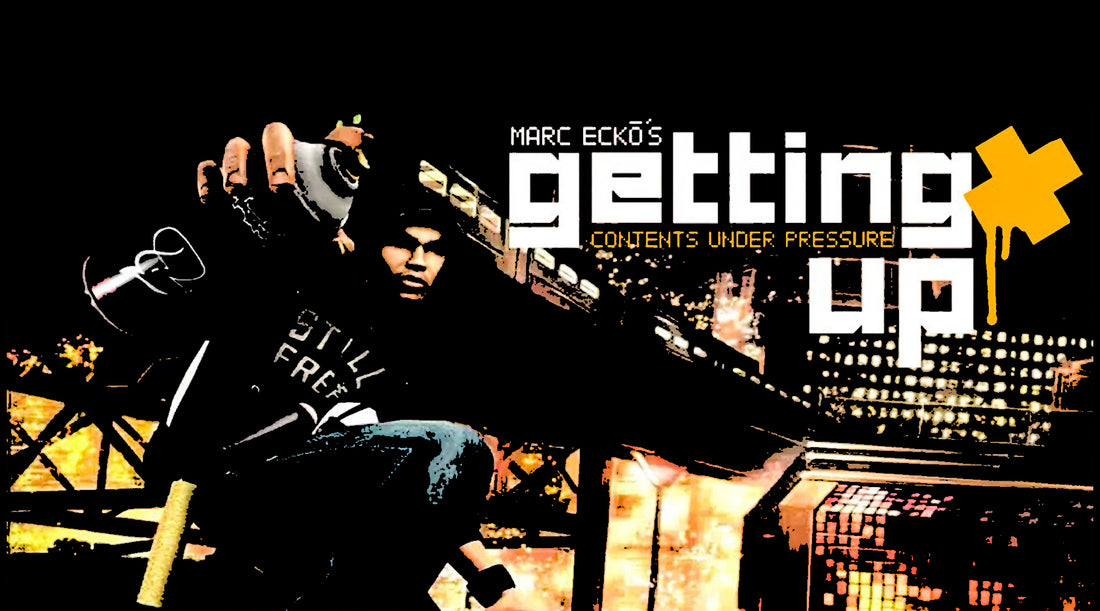Marc Eckō's Getting Up: Contents Under Pressure
Introduction: Video games have a remarkable ability to transport us to new worlds, introduce us to unique experiences, and sometimes even ignite lifelong passions. For me, that transformative moment occurred when I was just seven years old, playing "Getting Up" on my friend's Xbox. Little did I know that this game would serve as my gateway to the captivating world of graffiti art and introduce me to a level of innovation in gaming that left an indelible mark on my childhood.

Graffiti as an Art Form: Before diving into the game, I had a rudimentary understanding of graffiti as something that adorned urban landscapes. However, "Getting Up" transformed my perception of graffiti from mere vandalism to a legitimate and vibrant art form. The game's narrative revolved around the rebellious and creative subculture of street art, painting a vivid picture of its artistic depth and cultural significance.
Innovative Gameplay: What struck me most about "Getting Up" was its innovative gameplay. It seamlessly blended elements of action-adventure, platforming, and stealth, creating a unique gaming experience. As protagonist Trane, I navigated through a sprawling urban environment, scaling buildings, evading authorities, and using graffiti to conquer challenges. The inclusion of graffiti as both a narrative and gameplay element was groundbreaking.


Graffiti as a Tool: In the game, graffiti wasn't just about aesthetics; it was a tool for self-expression and a means of conveying powerful messages. I was introduced to various graffiti techniques, from simple tags to intricate pieces, each with its own significance and purpose. This exposure piqued my curiosity and left me eager to learn more about this fascinating art form.
Narrative Depth: The game's narrative was equally captivating. It told the story of Trane, an aspiring graffiti artist, as he navigated the complex world of New Radius, battling oppressive regimes and rival graffiti crews. The storytelling was not only engaging but also shed light on the cultural and political dimensions of graffiti art.

Soundtrack and Atmosphere: "Getting Up" had a pulsating soundtrack that immersed me in its gritty urban world. The music, coupled with the game's graffiti-splashed environments, created an atmosphere that felt authentic and gritty, drawing me deeper into the experience. It featured songs like: Who Shot Ya? by The Notorious B.I.G, Shook Ones Pt1/Pt2 by Mobb Deep, I Smell A Rat by Big Mama Thornton, Wanted by Rhymefest, and many more. This soundtrack went on to shape my music taste for the years to come.
Inspiration and Exploration: After playing "Getting Up," I was inspired to explore the world of graffiti art further. I began researching famous graffiti artists, their styles, and the messages they conveyed through their work. This newfound passion ignited my own creativity, leading me to experiment with graffiti art on paper and eventually on walls (with permission, of course).

Conclusion: "Marc Eckō's Getting Up: Contents Under Pressure" was not just a video game; it was a catalyst that introduced me to the vibrant and expressive world of graffiti art. Its innovative gameplay, compelling narrative, and immersive atmosphere left an indelible mark on my childhood, inspiring me to explore the realms of art and self-expression.
As I reflect on that transformative gaming experience, I'm reminded of the incredible power of video games to spark curiosity, inspire creativity, and open doors to new passions. "Getting Up" will always hold a special place in my heart, as it not only introduced me to graffiti art but also taught me that creativity knows no boundaries and can flourish in even the most unexpected places.


